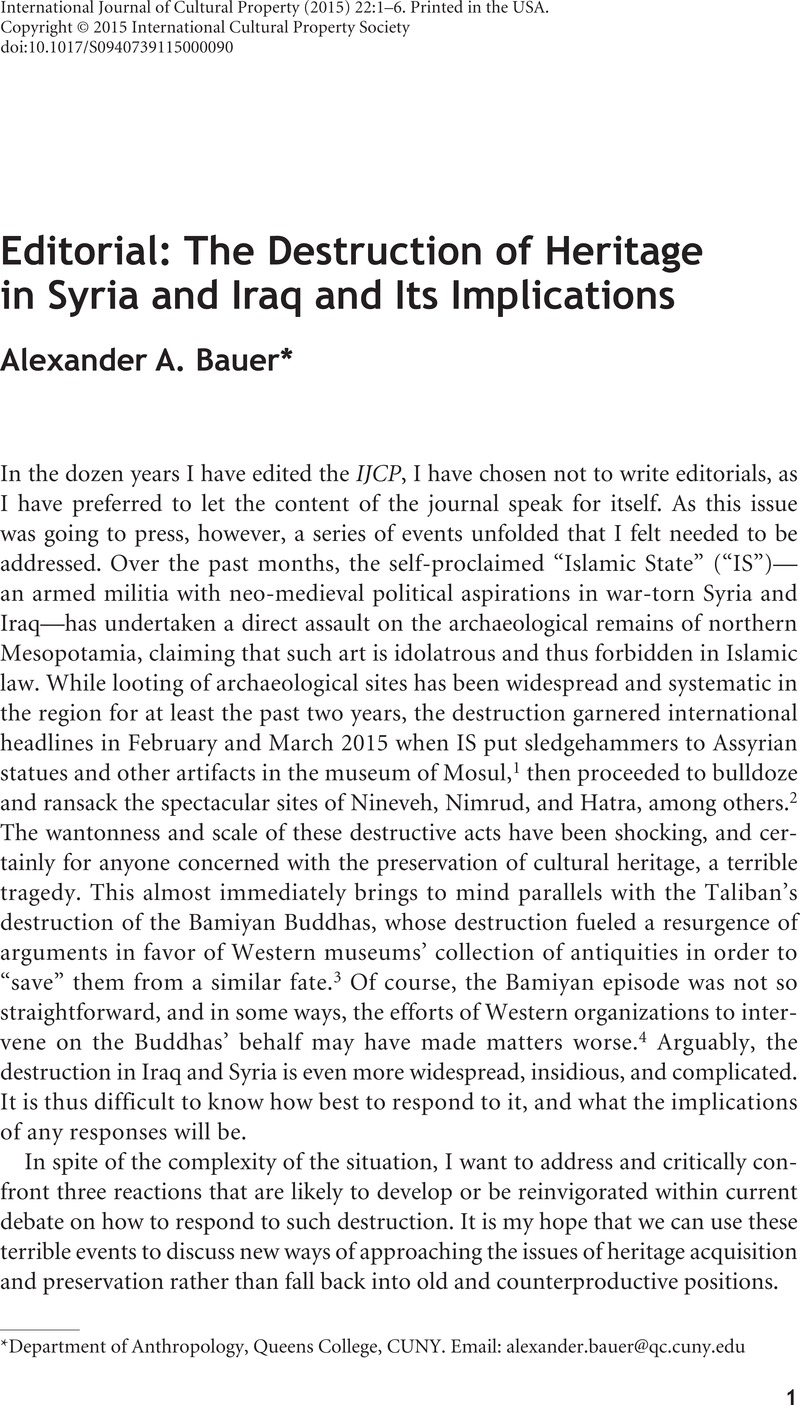Crossref Citations
This article has been cited by the following publications. This list is generated based on data provided by Crossref.
Hayashi, Nao
2015.
Heritage and Conflict Situations.
Museum International,
Vol. 67,
Issue. 1-4,
p.
55.
Giroud, Sandrine
and
Boudry, Charles
2015.
Art Lawyers’ Due Diligence Obligations: A Difficult Equilibrium between Law and Ethics.
International Journal of Cultural Property,
Vol. 22,
Issue. 2-3,
p.
401.
Petrevska, Biljana
Krakover, Shaul
and
Collins-Kreiner, Noga
2018.
Preserving cultural assets of others: Jewish heritage sites in Macedonian cities.
Tourism Geographies,
Vol. 20,
Issue. 3,
p.
549.
Butler, Richard W.
2018.
Routledge Handbook on Tourism in the Middle East and North Africa.
p.
231.
Hammer, Emily
Seifried, Rebecca
Franklin, Kathryn
and
Lauricella, Anthony
2018.
Remote assessments of the archaeological heritage situation in Afghanistan.
Journal of Cultural Heritage,
Vol. 33,
Issue. ,
p.
125.
Arnal, Victoria
2020.
Destructive trends in contemporary armed conflicts and the overlooked aspect of intangible cultural heritage: A critical comparison of the protection of cultural heritage under IHL and the Islamic law of armed conflict.
International Review of the Red Cross,
Vol. 102,
Issue. 914,
p.
539.
Rebat Al-kanany, Muhsin Mahdi
2020.
Extremist iconoclasm versus real Islamic values: implications for heritage-based tourism development in Iraq.
Journal of Heritage Tourism,
Vol. 15,
Issue. 4,
p.
472.
Hardy, Samuel Andrew
2021.
Conflict antiquities’ rescue or ransom: The cost of buying back stolen cultural property in contexts of political violence.
International Journal of Cultural Property,
Vol. 28,
Issue. 1,
p.
5.
Altaweel, Mark
2021.
The Market for Heritage: Evidence From eBay Using Natural Language Processing.
Social Science Computer Review,
Vol. 39,
Issue. 3,
p.
391.
Mollica, Marcello
and
Hakobyan, Arsen
2021.
Syrian Armenians and the Turkish Factor.
p.
165.
Bec, Alexandra
Moyle, Brent
Schaffer, Vikki
and
Timms, Ken
2021.
Virtual reality and mixed reality for second chance tourism.
Tourism Management,
Vol. 83,
Issue. ,
p.
104256.
Browne, Kim
and
Raff, Murray
2022.
International Law of Underwater Cultural Heritage.
p.
107.
Payntar, Nicole D.
2022.
Community Heritage in the Arab Region.
p.
261.
KARATAŞ, HİCRAN
2023.
Personal Experience Stories at the Crossroad of Archaeology and Folklore.
Revista de etnografie și folclor / Journal of Ethnography and Folklore,
Vol. 2023,
Issue. 1-2,
p.
36.





